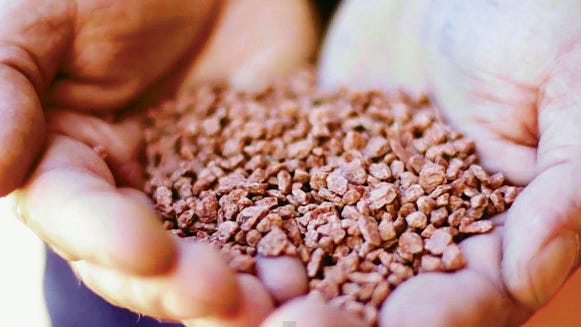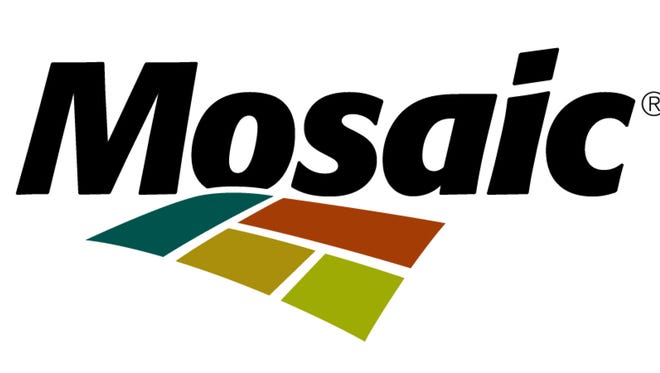
Mosaic potash wants to add a waste pond to its mining operations in Eddy County and federal regulators sought input on environmental dangers.
The company sought to augment its Carlsbad operations last year by expanding its tailings management system to include an additional pond for clay settling in the area.
Ultimately, the environmental assessment issued Monday by U.S. Bureau of Land Management found the impacts would be negligible.
Mosaic, along with Intrepid Potash, is one of two potash companies in the Carlsbad area – one of the first places in the U.S. where potash was discovered.
Potash is an ore made up of sodium phosphates used in myriad products from makeup to gunpowder. It was one of the first industries that led to Carlsbad becoming a hub of extraction ahead of its growth in the oil and gas sector.
More:‘Desperation’ remains. Recent rainfall does little for New Mexico’s escape from drought
The potash Mosaic mines was primarily used as fertilizer since its founding companies Cargill Inc. and IMC Global first came to the area as far back as 1909 and continued as a global leader in phosphate fertilizer products in the decades since.
When mining for potash, the company generates large quantities of brine water and the company must store it and other debris like tailings in nearby settling ponds.
In its proposal to the BLM, Mosaic sought to restart the use of a second settling pond known as Laguna Uno.
More:Protections for the Upper Pecos Watershed could mean cleaner water in southeast New Mexico

The BLM was tasked with determining if the additional settling pond will have a significant impact on the environment. As part of the decision-making process, the BLM instituted a 30-day public comment period beginning on Monday where it asked for the public to provide input on any environmental concerns for the proposal.
Laguna Uno is a 1,000-acre natural playa located south of the salt stack at Mosaic’s Carlsbad facility, and was historically used as a tailing’s facility, records show.
While tailings are presently prevented from entering Laguna Uno, it is used as a secondary discharge area if the primary clay settling pond becomes unusable.
More:Nuclear solution for New Mexico’s economy could be key to storing Northeast’s spent fuel
Clarified brine is moved from the clay settling pond into Laguna Grande, a 4,500-acre group of harvesting ponds where the water is evaporated, and the salt collected.
Recently, Mosaic reported a rapid build up of salt and clay in the clay settling pond, which made it difficult to deliver the needed brine into Laguna Grande and hoped that using Laguna Uno as a second clay settling pond would solve the problem.
The increased build up happened when Mosaic shifted from refining muriate of potash to a new K-Mag product known to have a lower chloride content to decrease fertilizer burn on crops but which generates more brine during production.
More:Trial on Intrepid Potash’s Pecos River water rights concludes, parties await verdict
The BLM reviewed Mosaic’s proposed action, along with a “no action” alternative and multiple other locations that were eliminated from a detailed study.
“With the exceptions of the Laguna Uno location, each of the alternative locations listed above would require large increases in the disturbance footprint,” the BLM report read. “Each alternative location other than Laguna Uno would remove a corresponding amount of habitat.
“BLM and (the New Mexico Environment Department) have indicated that they do not want to disturb additional habitat.”
More:Loving gets first hotel in southern Eddy County, to capitalize on industrial growth
The area for the proposed pond contains multiple sensitive species, the report read, and up to 88 acres of habitat and vegetation could be converted to bare soil and flooded with brine.
The report also compared the impact of the pond to other extraction operations permitted by the BLM’s Carlsbad Field Office (CFO) in southeast New Mexico, explaining there were no oil and gas well pads in the area and that Mosaic’s proposal would have a much lower impact than other extraction operations.
The CFO approved about 8,000 applications to drill each year from 2013 to 2020, records show, which leaves land “nearly sterile,” the report read, for 10 to 20 years.
More:Drought to persist through 2021. New Mexico pumping to offset water losses in Carlsbad
“The proposed projects is a miniscule portion of the currently authorized impacts from potash and oil and gas production on the CFO and in the Trans-Pecos region,” the report read.
The company’s request to alter its tailings system to add Laguna Uno was first filed in July 2020 which initiated the EA process.
BLM Carlsbad Field Manager Dave Evans said the review and public comments were a chance for stakeholders to voice any concerns.
The draft EA can be found on the BLM’s website, and comments can be submitted there online or by mail to the Carlsbad Field Office, Attn. Robert Salaz, 620 E. Greene St., Carlsbad, New Mexico 88220 until July 23.
“Review and comment periods provide an opportunity for the public to inform the BLM of any concerns they have regarding a proposed project,” he said in a news release. “Please keep in mind that substantive, factual-based comments are the most helpful.”
Adrian Hedden can be reached at 575-618-7631, achedden@currentargus.com or @AdrianHedden on Twitter.






